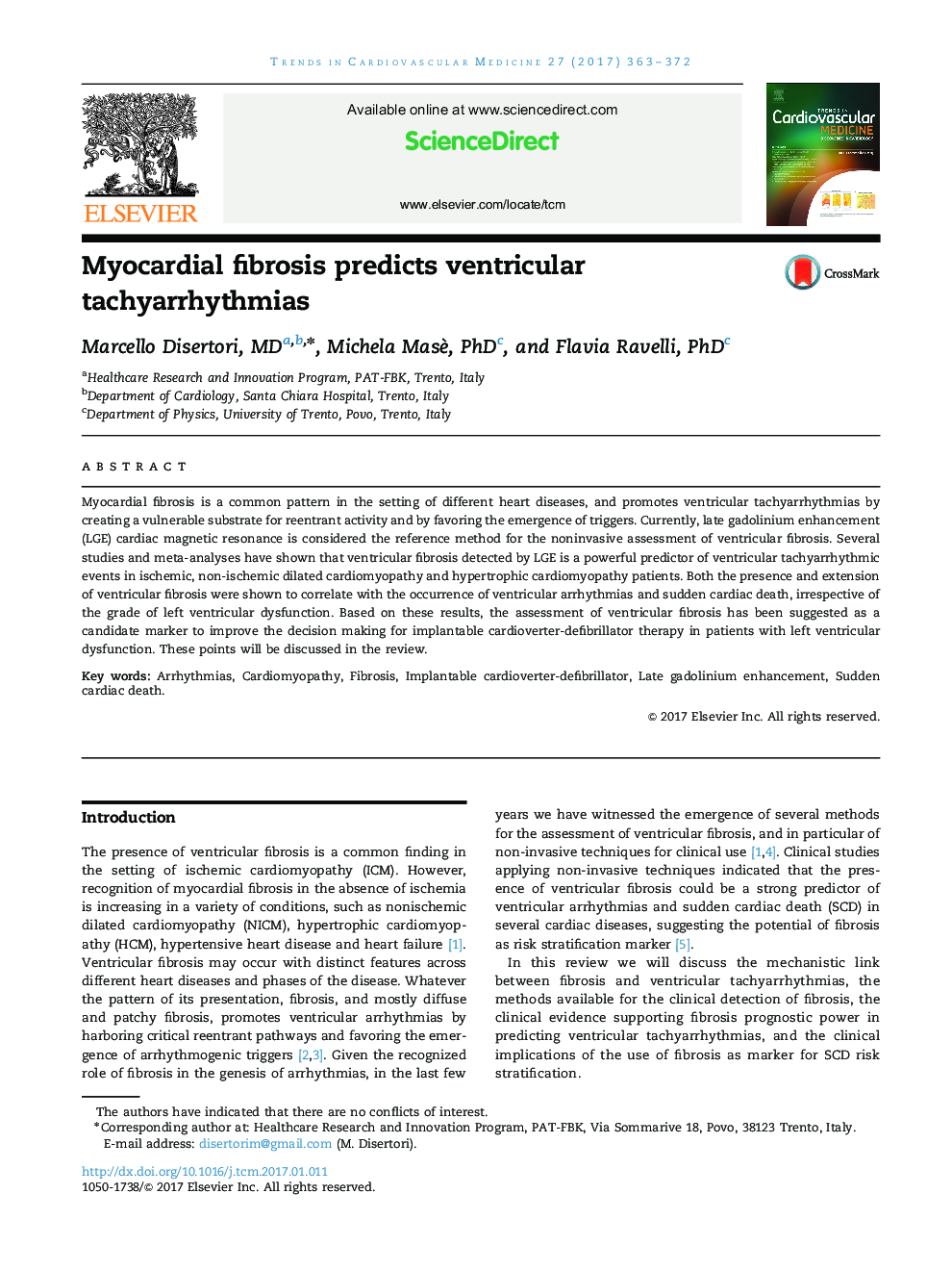| Article ID | Journal | Published Year | Pages | File Type |
|---|---|---|---|---|
| 5622314 | Trends in Cardiovascular Medicine | 2017 | 10 Pages |
Myocardial fibrosis is a common pattern in the setting of different heart diseases, and promotes ventricular tachyarrhythmias by creating a vulnerable substrate for reentrant activity and by favoring the emergence of triggers. Currently, late gadolinium enhancement (LGE) cardiac magnetic resonance is considered the reference method for the noninvasive assessment of ventricular fibrosis. Several studies and meta-analyses have shown that ventricular fibrosis detected by LGE is a powerful predictor of ventricular tachyarrhythmic events in ischemic, non-ischemic dilated cardiomyopathy and hypertrophic cardiomyopathy patients. Both the presence and extension of ventricular fibrosis were shown to correlate with the occurrence of ventricular arrhythmias and sudden cardiac death, irrespective of the grade of left ventricular dysfunction. Based on these results, the assessment of ventricular fibrosis has been suggested as a candidate marker to improve the decision making for implantable cardioverter-defibrillator therapy in patients with left ventricular dysfunction. These points will be discussed in the review.
